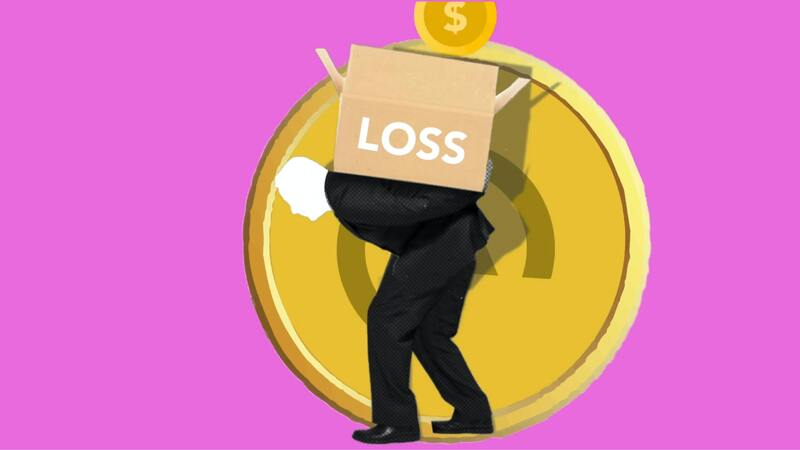Investment risk and return are two fundamental concepts that every investor should understand. Understanding how to manage risk while achieving optimal returns is critical to achieving long-term investment success.
This blog aims to provide readers with a comprehensive understanding of investment risk and return and how to balance the two effectively.
What is investment risk, and how does it affect investment returns?
Investment risk is the possibility that an investment’s actual return will differ from its expected return.
It is the chance that an investment may lose value or not generate the anticipated returns.
The greater the risk associated with an investment, the higher the potential return needs to be to compensate investors for taking on that risk.
Investment risk affects investment returns in a few different ways.
First, investments with higher risk tend to have higher potential returns. This is because investors require a greater potential reward for taking on more risk.
For example, stocks are generally considered riskier investments than bonds, but they also have the potential to generate higher returns.
Secondly, the level of investment risk can impact the variability of investment returns. Investments with higher risk tend to have more significant fluctuations in returns over time.
This means that investors may experience periods of high returns, followed by periods of low or negative returns.
Finally, investment risk can impact an investor’s ability to achieve their investment goals.
If an investment experiences significant losses due to risk, it can take a long time for an investor to recover their losses and achieve their desired investment returns.

What are the different types of investment risks, and how can they be managed?
There are several types of investment risks that investors should be aware of:
- Market Risk: This is the risk of the entire market or a particular sector declining, leading to a decrease in the value of the investments held. This type of risk is not specific to any particular investment but rather affects the market as a whole.
- Credit Risk: This is the risk that the issuer of a bond or other debt security may default on their payments. This can lead to a loss of investment principal or interest payments.
- Inflation Risk: This is the risk that the rate of inflation will outpace the rate of return on an investment, leading to a decrease in the real value of the investment.
- Interest Rate Risk: This is the risk that interest rates will rise, leading to a decrease in the value of fixed-income investments such as bonds.
- Liquidity Risk: This is the risk that an investor may not be able to sell an investment quickly enough or at a fair price, leading to a loss of investment value.
Investors can manage these risks through various strategies. Diversification is one of the most effective strategies for managing investment risk.
By investing in a variety of assets across different sectors and geographies, investors can reduce their exposure to any one particular risk.
Investors can also manage risks by setting appropriate asset allocation targets. This involves deciding how much of their portfolio to allocate to different asset classes, such as stocks, bonds, and real estate, based on their risk tolerance and investment objectives.
Another strategy for managing risk is to conduct thorough research before investing. This includes analyzing financial statements, market trends, and other relevant data to make informed investment decisions.
Finally, investors can manage risk by using investment products such as options, futures, and hedging strategies to limit their exposure to potential losses.
However, these strategies can be complex and may require professional expertise.
How can an investor determine their risk tolerance when investing?
Determining one’s risk tolerance is an essential step in creating a sound investment plan. Risk tolerance refers to an investor’s ability to tolerate losses and willingness to take risks to achieve their investment goals.
An investor’s risk tolerance will depend on several factors, including their age, financial situation, investment objectives, and personal preferences.
One way to determine your risk tolerance is to complete a risk tolerance questionnaire. These questionnaires typically ask a series of questions about an investor’s financial situation, investment goals, and risk preferences.
Based on the answers provided, the questionnaire will assign a risk tolerance score or recommend an appropriate asset allocation.
Another approach is to consider your investment time horizon.
Generally, investors with longer investment horizons, such as those investing for retirement, may be able to tolerate more risk since they have more time to recover from potential losses.
Conversely, investors with shorter investment horizons, such as those saving for a near-term goal, may need to take a more conservative approach to investing to avoid significant losses.
It is also important to consider your emotional and psychological tolerance for risk. Some investors may be comfortable taking on more risk, while others may be more risk-averse.
Factors such as past investment experiences, life events, and personal beliefs can all impact an investor’s willingness to take on risk.
Ultimately, determining your risk tolerance involves evaluating your financial situation, investment objectives, and personal preferences.
By understanding your risk tolerance, you can develop an investment plan that balances risk and return effectively and helps you achieve your long-term investment goals.

What are the historical returns of different asset classes?
The historical returns of different asset classes can vary significantly, and investors should be aware of these variations when creating an investment portfolio.
For one, stocks have historically generated the highest long-term returns of any major asset class, with an average annual return of around 10% over the past 100 years. However, this return comes with higher volatility and risk than other asset classes.
Meanwhile, bonds have historically generated lower returns than stocks but with less volatility and risk. Over the past 30 years, the average annual return for U.S. government bonds has been around 5%.
Real estate can also be an excellent way to generate long-term wealth, with historical returns averaging around 8% per year over the past few decades. However, real estate investments can also be illiquid and require significant capital.
On the other hand, cash and cash equivalents such as savings accounts, money market funds, and short-term bonds generate low returns, with an average annual return of around 1-2% over the past few decades. However, they are also the least risky of all asset classes.
It’s important to note that historical returns are not a guarantee of future performance, and investors should not rely solely on past performance when making investment decisions.
The returns of different asset classes can also vary based on economic conditions, geopolitical events, and other factors.
How does the current economic and market environment impact investment risk and return?
The current economic and market environment can have a significant impact on investment risk and return.
Economic conditions such as inflation, interest rates, and GDP growth can impact the performance of different asset classes.
For example, high inflation can erode the value of fixed-income investments such as bonds, while rising interest rates can reduce the attractiveness of stocks.
Geopolitical events such as trade wars, political instability, and natural disasters can also create uncertainty and volatility in the markets, which can increase investment risk.
Conversely, positive geopolitical developments can boost investor confidence and drive returns.
There are also industry-specific factors such as technological advancements, changing consumer preferences, and regulatory changes can impact the performance of individual companies and sectors, which can affect investment risk and return.
Finally, investor sentiment can also impact investment risk and return. During periods of market optimism, investors may be more willing to take on riskier investments in pursuit of higher returns.
Conversely, during periods of market pessimism, investors may be more risk-averse and seek out safer investments.
It’s essential to note that the current economic and market environment is constantly evolving and can be unpredictable.
Investors should focus on building a diversified portfolio that can weather different market conditions and remain committed to their long-term investment goals, rather than making investment decisions based solely on short-term market movements.

How can an investor use financial ratios to evaluate investment risk and return?
Financial ratios are useful tools for evaluating investment risk and return.There two most commonly used ones are sharpe ratio and treynor ratio.
The Sharpe ratio measures an investment’s risk-adjusted return, which is the return earned in excess of the risk-free rate per unit of volatility.
It indicates how much return an investor is receiving for each unit of risk taken. A higher Sharpe ratio indicates better risk-adjusted returns.
On the other hand, the Treynor ratio measures an investment’s excess return per unit of systematic risk.
It assesses how much excess return an investor earns for each additional unit of risk taken on by investing in a particular asset or portfolio. A higher Treynor ratio indicates better performance in relation to systematic risk.
To use these ratios effectively, an investor should consider the time horizon of the investment when evaluating financial ratios.
Short-term fluctuations may not be indicative of long-term performance, so investors should use a longer-term perspective to evaluate their investments.
Financial ratios should also be compared to an appropriate benchmark.
For example, a stock portfolio’s performance should be compared to a relevant stock market index. This allows an investor to assess whether their investment is outperforming or underperforming the market.
Lastly, both the Sharpe and Treynor ratios assume that an investor is willing to take on a certain level of risk. Investors should ensure that the level of risk they are taking on aligns with their risk tolerance.
What are the strategies to balance investment risk and return?
Investing involves balancing investment risk and return.
While higher risk investments may offer the potential for higher returns, they also come with a greater likelihood of loss. Conversely, lower risk investments may offer more stability but may have lower returns.
Therefore, it is crucial for investors to identify strategies that can help balance investment risk and return to achieve their financial goals.
Here are proven strategies that investors can use to balance investment risk and return:
- Diversify your portfolio: Invest in a variety of assets such as stocks, bonds, real estate, and commodities to spread your risk and maximize returns.
- Understand your risk tolerance: Identify your risk tolerance and invest accordingly. Conservative investors should focus on low-risk investments, while aggressive investors may be willing to take on higher risks for higher returns.
- Conduct thorough research: Before investing, conduct extensive research on the market, the company, and the investment vehicle. This helps you make informed decisions and reduces the risk of loss.
- Stay informed: Stay up-to-date on market trends, economic indicators, and industry news to identify potential risks and opportunities.
- Invest for the long-term: Focus on long-term investments that have the potential for growth and are less likely to be affected by short-term market fluctuations.
- Consider asset allocation: Allocate your assets in a way that matches your investment goals, risk tolerance, and time horizon.
- Use dollar-cost averaging: Invest a fixed amount of money at regular intervals to reduce the impact of market volatility and minimize risk.
- Rebalance your portfolio: Periodically review and adjust your portfolio to maintain the desired asset allocation and minimize risk.
- Consider tax implications: Take into account the tax implications of your investments and make informed decisions that minimize tax liabilities.
- Seek professional advice: Consult with a financial advisor to develop a personalized investment strategy that balances risk and return based on your unique situation and goals.

Conclusion
Investing can be an excellent way to build wealth and achieve financial goals. However, it’s essential to understand the relationship between investment risk and return.
While higher risk investments may offer the potential for higher returns, they also come with a greater likelihood of loss. Conversely, lower risk investments may offer more stability but may have lower returns.
By understanding the key concepts and using proven strategies to manage risk and maximize returns, investors can create a well-rounded investment portfolio that aligns with their goals and risk tolerance.

No responses yet